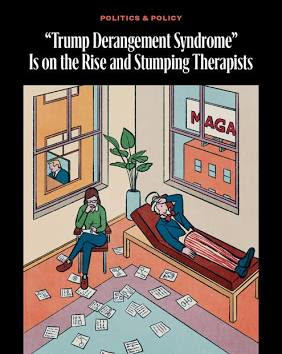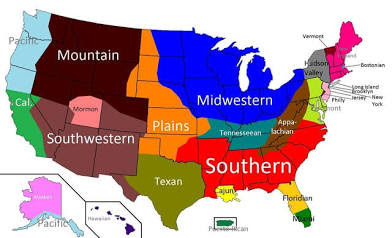Trump's Tariff Wars Are Legit
Trump is trying to fix a problem that was started at the end of WWII. We had to make a decision to make. Europe was in shambles at the end of the war. Russia, a WWII ally, lost more people than any other country. They wanted their share of Europe. Roosevelt and Churchill didn't like Stalin but needed him to beat the Nazis.
The US financed the rebuilding of Western Europe via the Marshall Plan underwritten by Citibank. The USSR/SOVIET UNION/RUSSIA took Eastern Europe and instituted Communism. That was the beginning of the COLD WAR.
The Tariffs that followed were in favor of the European countries to help them get back on their feet. Trump is looking at the situation and realizing we are and have been flipping the bill for Europe and things need to be leveled up.
Trump is trying to fix a problem that was started at the end of WWII. We had to make a decision to make. Europe was in shambles at the end of the war. Russia, a WWII ally, lost more people than any other country. They wanted their share of Europe. Roosevelt and Churchill didn't like Stalin but needed him to beat the Nazis.
The US financed the rebuilding of Western Europe via the Marshall Plan underwritten by Citibank. The USSR/SOVIET UNION/RUSSIA took Eastern Europe and instituted Communism. That was the beginning of the COLD WAR.
The Tariffs that followed were in favor of the European countries to help them get back on their feet. Trump is looking at the situation and realizing we are and have been flipping the bill for Europe and things need to be leveled up.
#Tariffs #Trump #Economy
Trump’s Tariffs: Correcting a Post-WWII Economic Imbalance
Introduction
Since taking office, former President Donald Trump has pursued an aggressive trade policy centered on tariffs, particularly targeting China and traditional U.S. allies in Europe. While critics argue that these measures disrupt global trade, supporters contend that Trump is attempting to rectify a long-standing economic imbalance that originated at the end of World War II. To understand the rationale behind Trump’s tariffs, we must examine the post-war economic order, the Marshall Plan, and how U.S. trade policies have historically favored Europe at America’s expense.
The Post-WWII Economic Order
At the end of World War II, Europe lay in ruins. The war had devastated infrastructure, crippled industries, and left millions displaced. The Soviet Union, despite being a U.S. ally during the war, had suffered catastrophic losses—over 20 million dead—and sought to expand its influence into Eastern Europe. While President Franklin D. Roosevelt and British Prime Minister Winston Churchill distrusted Soviet leader Joseph Stalin, they needed his cooperation to defeat Nazi Germany.
Once the war ended, the ideological divide between the capitalist West and the communist East became irreparable. The U.S. and its allies sought to rebuild Western Europe, while the Soviet Union imposed communist regimes across Eastern Europe, marking the beginning of the Cold War.
The Marshall Plan and U.S. Economic Dominance
To prevent the spread of communism and stabilize Western Europe, the U.S. launched the Marshall Plan (1948-1952), a massive economic aid program that provided over $12 billion (approximately $150 billion today) to rebuild war-torn nations. This initiative was underwritten by American financial institutions, including Citibank, and was designed to restore industrial production, stabilize currencies, and open markets for U.S. goods.
However, the Marshall Plan also established an economic framework that placed Europe in a favorable trade position relative to the U.S. European nations were allowed to impose tariffs and trade restrictions to protect their recovering industries, while the U.S. maintained relatively open markets. Over time, this arrangement became entrenched, with Europe developing strong industrial bases while the U.S. absorbed their exports with minimal reciprocity.
The Lingering Imbalance
For decades, the U.S. tolerated trade deficits with Europe, viewing it as a necessary cost of maintaining the Western alliance during the Cold War. However, after the fall of the Soviet Union in 1991, the geopolitical justification for these imbalances faded. Yet, the trade policies remained largely unchanged.
The European Union (EU) emerged as an economic powerhouse, leveraging tariff and non-tariff barriers to protect its industries while enjoying relatively open access to the U.S. market. For example:
- Auto Tariffs: The EU imposes a 10% tariff on U.S. cars, while the U.S. only charges 2.5% on European vehicles.
- Agriculture: The EU heavily subsidizes its farmers while restricting U.S. agricultural imports through stringent regulations.
- Steel and Aluminum: European producers have historically benefited from state subsidies, allowing them to undercut U.S. manufacturers.
Trump’s argument is simple: **Why should American taxpayers and businesses continue subsidizing Europe’s prosperity at their own expense?
Trump’s Tariff Strategy
Trump’s approach to trade is rooted in economic nationalism—the belief that trade policies should prioritize American workers and industries. His administration imposed tariffs on:
- Steel (25%) and Aluminum (10%) (2018) – Targeting China but also affecting EU exporters.
- European Luxury Goods – Proposed tariffs on products like French wine, Italian cheese, and German cars.
- Aircraft Subsidies – A long-standing dispute over Airbus (EU) and Boeing (U.S.) led to WTO-approved tariffs.
These measures were designed to force Europe to renegotiate trade terms, reduce barriers to U.S. exports, and level the playing field.
The European Response
The EU retaliated with its own tariffs on U.S. goods, such as:
- Harley-Davidson motorcycles
- Bourbon whiskey
- Agricultural products like oranges and peanuts
European leaders argued that Trump’s tariffs violated global trade norms and risked a full-blown trade war. However, Trump’s stance was that Europe had grown accustomed to favorable treatment and needed to adjust to fairer terms.
The Broader Implications
Trump’s tariffs were not just about economics—they were also about reshaping America’s role in the global order. For decades, the U.S. accepted trade deficits as the price of maintaining alliances. But with China’s rise and Europe’s continued protectionism, Trump argued that this arrangement was no longer sustainable.
1. Reducing Dependency on Foreign Markets
By imposing tariffs, Trump sought to incentivize domestic production, particularly in manufacturing and critical industries like steel.
2. Forcing Renegotiations
The threat of tariffs pushed the EU to the negotiating table, leading to limited trade concessions. However, a comprehensive U.S.-EU trade deal remains elusive.
3. Challenging Globalization
Trump’s policies represented a rejection of unfettered globalization, arguing that it had harmed American workers while benefiting multinational corporations and foreign competitors.
Conclusion: A Necessary Reckoning?
Trump’s tariffs were a controversial but deliberate attempt to address a 70-year-old economic imbalance that began with the Marshall Plan. While critics warn of trade wars and economic disruption, supporters argue that Europe has long taken advantage of U.S. market openness without offering fair reciprocity.
Whether Trump’s approach was the right one remains debated. However, his policies forced a long-overdue conversation about whether the U.S. should continue subsidizing allies’ economies at the expense of its own workers and industries. As global trade dynamics evolve, future administrations will have to decide: Should America continue footing the bill for Europe’s prosperity, or is it time for a more balanced approach?
The answer to that question will shape U.S. trade policy—and its economic future—for decades to come.
#trade #tariffs #economics #economy #trump



















.png)







